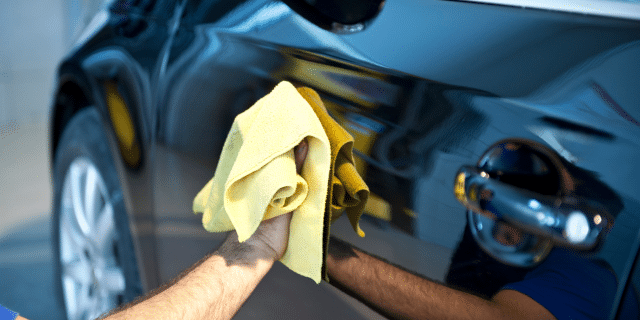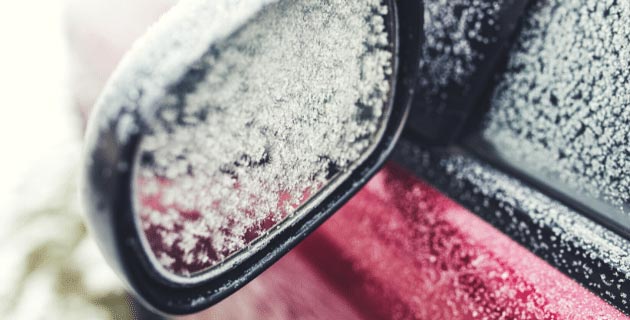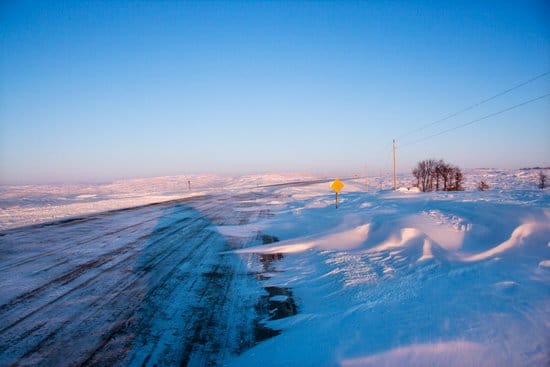
by California Casualty | Auto Insurance Info |
You take pride in your car’s appearance—shiny, clean, and polished to perfection. But even the most careful car owner can fall victim to everyday threats that silently sabotage that showroom sparkle. From spilled coffee to sunbaked bird droppings, the dangers are everywhere. Here’s what to watch out for—and how to fight back.
1. Parking Under Trees
Shady spots might seem like a great way to beat the heat, but trees come with risks. Sticky sap, falling branches and twigs, and even acorns can wreak havoc on your paint. Sap is especially stubborn—it bonds with the surface and can damage the finish over time. Use a bug and tar remover from your local auto store to gently lift it off.
2. Bird Droppings
Think of bird droppings as acid bombs for your paint job. They harden in the sun and can etch into your car’s finish if left too long. Wipe them off with a wet microfiber cloth using a gentle lifting motion (don’t scrub!). You can let the cleaner sit for a few minutes if needed to soften hardened spots.
3. Bug Splatter
Bugs on the windshield are just an annoyance. But bugs on your paint? That’s a problem. Many insects contain acidic compounds that can damage your finish. Clean them off ASAP with a dedicated bug remover or mild soap and water.
4. Fuel Spills
Fuel stains are more than ugly—they’re damaging. Gasoline can eat away at your paint and leave behind stubborn marks. Avoid topping off the tank to help prevent the chance of spills. If there’s a spill, clean it up immediately. Pro tip: Older brake fluid is also a known paint-stripper, so be extra careful when topping off your fluids.
5. Road Salt
Winter driving means road salt—and that means potential rust. Salt can corrode your car’s underbody and eat away at the paint if left unwashed. Rinse your car regularly in the winter and consider a protective wax coat before the first snowfall. Coastal drivers, take note: salty ocean air can do the same.
6. Writing in the Dust
We get it—drawing “Wash Me” on a dusty car is tempting. But those dust particles? They’re basically sandpaper. Dragging them across the surface can create micro-scratches. Dust mixed with rainwater can also become acidic, further damaging your finish. When you see dust, that’s a great time to run your vehicle through a car wash.
7. Dirty Sponges & Harsh Car Washes
Washing your car with a dirty sponge just grinds more grime into the paint. Stick to clean microfiber cloths, and avoid old-style brush car washes, which can leave swirl marks. Soft-cloth or touchless car washes are safer choices.
8. Coffee and Soda Spills
Placing your cup on the roof while fumbling for keys? We’ve all done it. But if you spill sugary or acidic drinks, they can stain your paint fast. Wipe off any spills immediately, especially soda and coffee.
9. Silly String & Shaving Cream Pranks
They might seem harmless, but Silly String contains resins and dyes that can bond to your paint, and shaving cream can leave behind lasting stains. If your car becomes the victim of a prank, rinse and wash it thoroughly as soon as possible.
10. Sprinkler Water Spots
Those white spots you see after a sprinkler hits your car? That’s mineral buildup from hard water, and over time, it can wear away your clear coat. Always dry your car with a microfiber towel—don’t let it drip dry.
Protect Your Paint Like a Pro
You can take steps year-round to protect your paint, and help it last longer.
- Park in a garage or covered area whenever possible.
- Wash your car regularly, especially after road trips or storms.
- Dry it completely with a microfiber towel to avoid water spots.
- Remove bird droppings, sap, and bugs as soon as you spot them.
- Wax your car every 3 to 6 months to maintain a protective barrier.
Your car is one of your biggest investments. Protect it with the right insurance for added peace of mind.
This article is furnished by California Casualty, providing auto and home insurance to educators, law enforcement officers, firefighters, and nurses. Get a quote at 1.866.704.8614 or www.calcas.com.

by California Casualty | Auto Insurance Info, Helpful Tips, Travel |
You’re ready to hit the road, but your car has other plans—stuck in a snowbank with tires spinning. Before your frustration gets out of hand, take a deep breath. With the right techniques and a little patience, you can free your vehicle and get back on track. Here’s your step-by-step guide to escape the snow’s icy grip without breaking a sweat—or your car!
1. Stay Safe and Assess the Situation
Before doing anything, ensure you’re safe. Turn on your hazard lights and assess the situation. Are other vehicles nearby? Make sure you’re visible to others and have enough space to work around your car safely.
2. Clear the Exhaust Pipe
Check your car’s tailpipe for snow and ice. A clogged exhaust can cause dangerous carbon monoxide to back up into the vehicle’s cabin. Clearing it is a critical safety step before you start working to free your car.
Use a shovel or any sturdy tool to remove snow around the tires, under the car, and along the path you want to travel. Clearing as much snow as possible will make it easier to gain traction and move forward.
4. Try Melting the Snow
If the snow around your wheels is packed and icy, try sprinkling salt or a de-icing agent. Be cautious, as salt can cause rust on your vehicle, and some chemicals may be harmful to pets and the environment.
5. Add Traction
Improve your grip by spreading dry materials like sand, kitty litter, or even your car’s floor mats under the tires. These items can provide the friction needed to get your car moving.
Pro Tip: Lower your window slightly to listen for spinning wheels as you press on the gas. If you hear them spinning, it’s not working.
6. Choose the Right Driving Technique
Depending on your type of vehicle, you will want to take advantage of its strengths.
-
-
- 4-Wheel Drive: If your vehicle has a 4-wheel drive option, turn it on to deliver power to all wheels. Use a low gear in an automatic to reduce wheel spinning.
- Front-Wheel Drive: Turn your steering wheel left and right repeatedly to find a patch of traction.
- Manual Transmission: Start in second gear to reduce wheel spin and increase grip.
7. Turn Off Traction Control
Your traction control system can prevent your wheels from spinning, which helps in skids but can hinder your efforts when stuck. Temporarily disable it to give your wheels the power they need to move.
8. Rock Your Vehicle
Gently rock your car by shifting between forward and reverse gears. Apply light gas pressure—avoid flooring it—and stop if it’s not working after a few tries to prevent transmission damage.
9. Let Air Out of Your Tires
In extreme cases, slightly deflate your tires to increase surface contact and improve traction. Only do this if you’re near a place to reinflate them, as driving on underinflated tires can be dangerous.
10. Call for Roadside Assistance
If all else fails, it’s time to call for help. Roadside assistance professionals have the tools and expertise to safely free your vehicle.
After You’re Unstuck
Once your car is free, pull over in a safe spot and inspect your tires. Spinning wheels can pack snow and ice into the treads, making steering difficult. Use a snow scraper to clear them and restore proper grip. Don’t forget to turn your traction control back on before resuming your drive. Follow winter driving safety tips to prevent any future issues.
Be Prepared for the Future
Getting stuck in deep snow can damage your car’s transmission, battery, or drivetrain. Get your car checked out if you have been stuck in deep snow.
In addition, prepare for any future incidents. Keep a winter emergency kit in your vehicle, including:
- Ice scraper and snow brush
- First aid kit
- Flashlight and flares
- Blankets
- Tire pressure gauge
- Car jack
- Cell phone charger
- Kitty litter or sand for traction
Finally, make sure your vehicle is protected for winter with the right insurance. This will help add peace of mind. Safe travels.
This article is furnished by California Casualty, providing auto and home insurance to educators, law enforcement officers, firefighters, and nurses. Get a quote at 1.866.704.8614 or www.calcas.com.

by California Casualty | Auto Insurance Info |
You’ve done it a hundred times – sitting in a cold car, watching your breath while you’re waiting for the engine to warm up. It’s a necessary part of winter driving, right? Experts would disagree.
It used to be that cars needed to be warmed up before you could drive them in cold temperatures. But that’s no longer the case with today’s vehicles. Whether you’re an experienced or a new driver, here’s what you need to know.
Why today’s cars don’t need a lot of warm-up time
A car’s engine works by igniting a mixture of gasoline and air. That used to be the job of the carburetor. But carburetors didn’t work well in cold temperatures because they couldn’t get the right mix with denser cold air. If you didn’t warm them up, you ran the risk of stalling your car. Starting in the 1980s, manufacturers stopped using carburetors in favor of new technology.
Today’s vehicles use electronic fuel injectors that can detect cold weather and release extra gasoline for the right fuel-air mix.
Warming up your car is a waste of time, gas, and money.
It’s a given that you could be using your time more productively than waiting for your car to warm up. As you idle, you’re burning gas, which is essentially wasting money, too. You’re also increasing wear and tear on your car’s engine. Plus, you’re adding pollution to the air. According to a 2009 study, idling your car contributes to 1.6% of all U.S. greenhouse gas emissions. That’s nearly double the entire iron and steel manufacturing industry. States have begun to take notice and issued anti-idling fines beyond 3 minutes.
A one-minute warm-up
With your car’s onboard computer and fuel injection system, it takes just about one minute for your car to warm up. That’s regardless of the outside temperature. That doesn’t mean that the inside of your car will be warm, or that the windows will be defrosted, but it does mean that the oil has traveled from the bottom of your engine to the top.
7 Steps to quickly heat up your car
Follow these steps to quickly heat up your car this winter.
1. Turn on your ignition without starting the engine. After about 5 seconds, you should hear the fuel pump priming the engine. Then start the car.
2. Don’t turn on the heat right away. The air being pumped out from the heater core will still be cold. That air will keep the engine from getting hot quickly.
3. Also make sure you are not running the radio, your seat warmers or defroster initially as these put a strain on the electric system.
4. Idle your vehicle for about 30 seconds (or a minute if your car is older). You can go a little longer if your car is covered in snow or ice. This will allow your vehicle to produce warm air.
5. You do want to give yourself time to warm up that has nothing to do with the engine. It’s all about your visibility and your comfort. You want to be able to see while you are driving and you want to be comfortable enough so you can concentrate on the road. Turn on the defroster to help clear the windows. Wait until you can drive safely; don’t try to drive with a small portion of cleared window.
6. Cars will warm up faster if you are driving than if you are idling. Normal driving for 5-10 minutes should do the trick.
7. Once you’re driving, point the warm air at your chest. That will warm you as quickly as possible. Then point the heat at your feet. As heat rises, the whole car will stay warm.
Tips for the extreme cold
In some places in the U.S., such as the upper Midwest, temperatures can dip well below zero and stay there. Consider these additional steps to help your car weather the cold.
-
- Once regular oil gets below 20 degrees Fahrenheit, it becomes thick. Use synthetic oil which holds its consistency.
- Battery heating pads and thermal wraps can keep your battery warm. A cold battery trying to hold a charge in frigid temperatures can harm your alternator.
- Oil heaters for the dipstick or magnetic heaters for the oil pan can help. There also are coolant heaters for antifreeze.
- Engine block heaters attach to your car and plug into an electric outlet. You can install a permanent heater, too.
Protect your car with auto insurance for peace of mind this winter and all year round.
This article is furnished by California Casualty, providing auto and home insurance to educators, law enforcement officers, firefighters, and nurses. Get a quote at 1.866.704.8614 or www.calcas.com.

by California Casualty | Auto Insurance Info, Safety |
Snowy and icy roads are the cause over a hundred thousand accidents every year, according to the US Department of Transportation. One of the most common, and arguably the most dangerous, parts about driving in the winter is hitting a hidden patch of ice called black...
by California Casualty
Resources and Helpful Tips Here you will find a variety of resources and helpful tips in the form of checklists, infographics and more. Whether you are looking to understand the meaning of an auto insurance term, creating or updating your home inventory, or looking...




